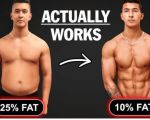Exploring the World of Competitive Fitness Sports
For as long as I can remember, I've been fascinated by the physical challenges that competitive fitness athletes face. The world of competitive fitness sports is intense, dynamic, and constantly evolving. From CrossFit and bodybuilding to obstacle racing and strongman competitions, there's no shortage of events for those who want to test their limits. In this article, I'll share what I've learned about competitive fitness sports, how athletes train for these events, and what it takes to excel in the world of fitness competitions.
1. The Evolution of Competitive Fitness
Over the years, competitive fitness has grown into a massive industry, with millions of athletes and fans around the globe. What started as informal competitions has evolved into major events, with organizations like the International Federation of Bodybuilding (IFBB), CrossFit, and Spartan Race leading the charge. As someone who's been actively involved in fitness for many years, I’ve witnessed the evolution firsthand, and it’s incredible how far competitive fitness has come.
In the early days, fitness competitions were mainly centered around bodybuilding, where athletes would showcase their physique and strength. But as fitness culture grew, more dynamic forms of competition emerged, such as CrossFit, which combines high-intensity functional movements with strength training, and obstacle course racing, which requires not just strength, but also speed, agility, and endurance. These types of competitions have attracted a new generation of athletes, and the competitive fitness landscape has exploded as a result.
2. Popular Types of Competitive Fitness Sports
There are many different types of competitive fitness sports, each with its own unique challenges and appeal. Below, I’ll explore some of the most popular events and what it takes to compete in them.
2.1. CrossFit
CrossFit has become one of the most well-known competitive fitness sports globally. What started as a fitness program has now grown into a competitive sport that includes the annual CrossFit Games, one of the biggest events in the fitness world. CrossFit competitions involve a combination of weightlifting, gymnastics, running, rowing, and more, all designed to test an athlete's strength, endurance, and agility.
As someone who has trained in CrossFit, I can tell you that it's both exhilarating and grueling. The preparation for CrossFit competitions requires dedication, consistency, and the ability to push your body to its physical limits. Competitors train for months leading up to the Games, working on their weaknesses and refining their skills. What makes CrossFit unique is its emphasis on "functional fitness," meaning the exercises mirror movements that you would use in real life. Whether lifting heavy objects or climbing a rope, the goal is to perform as well in the gym as you would in the real world.
2.2. Bodybuilding
Bodybuilding is another prominent competitive fitness sport that has gained massive popularity over the decades. While it’s often thought of as a sport focused solely on aesthetics, bodybuilding is also about strength and conditioning. The most well-known bodybuilding competition is the Mr. Olympia competition, where athletes showcase their physique, muscle development, and symmetry in front of a panel of judges.
For anyone interested in bodybuilding, the preparation is intense. It requires months or even years of dedicated training, proper nutrition, and strict discipline. Bodybuilders typically spend hours in the gym each day, focusing on building muscle mass, strength, and definition. In my experience, bodybuilding is not just about lifting weights; it's about understanding your body and pushing it to achieve a specific aesthetic and functional goal.
2.3. Obstacle Racing
Obstacle racing, such as the Spartan Race and Tough Mudder, has rapidly grown in popularity as a competitive fitness sport. These races typically involve running through a series of obstacles that test endurance, strength, and agility. What makes obstacle racing different from other fitness events is the combination of physical challenges—like crawling under barbed wire, climbing walls, and jumping over fire—with the psychological challenge of pushing through fatigue and obstacles.
As someone who has participated in these races, I can tell you that it’s a completely different experience from traditional sports. The training for obstacle racing involves a lot of cardiovascular work, functional strength training, and mental resilience. Competitors need to be fast, strong, and agile, with the ability to overcome a variety of obstacles on the course.
2.4. Strongman Competitions
Strongman competitions are another popular form of competitive fitness that focuses on raw strength and power. Events like the World’s Strongest Man feature athletes lifting, pulling, or carrying massive weights in a variety of events such as the deadlift, stone lifting, and truck pulling. These competitions require immense physical strength, as well as mental fortitude to complete the grueling tasks.
The training for strongman competitions is highly specialized. Athletes focus on lifting heavy, often unconventional objects—like Atlas stones or giant logs—while working on their endurance and grip strength. I’ve seen how the preparation for strongman events can involve a variety of exercises that challenge different muscle groups and test an athlete's strength in new and unique ways.
3. Training and Preparation for Competitive Fitness Sports
Regardless of the type of competitive fitness sport, training for these events requires a high level of discipline, consistency, and focus. I’ve had the opportunity to train for multiple fitness events, and here are some of the key aspects that I’ve found essential in preparation:
3.1. Specificity in Training
Training for competitive fitness sports requires specificity, meaning that athletes need to focus on the movements and skills that are most relevant to the competition. For example, CrossFit athletes need to be proficient in various domains—strength, endurance, agility—so their training is designed to be as broad as possible, targeting multiple areas of fitness. On the other hand, bodybuilders will focus more on isolation exercises that build muscle mass and symmetry.
Specificity also applies to obstacle racers and strongman competitors, who need to practice specific movements and work on their grip strength, endurance, and obstacle navigation skills. As I learned through my own training, tailoring your workouts to the demands of the competition is crucial for success.
3.2. Nutrition and Recovery
Nutrition plays a vital role in the preparation for any competitive fitness event. Whether you're training for a bodybuilding competition or an obstacle race, fueling your body with the right nutrients is essential. I’ve found that a diet high in protein, healthy fats, and complex carbohydrates, along with proper hydration, can significantly improve performance and recovery. After intense training sessions, recovery becomes just as important, and rest days are necessary to allow the muscles to rebuild and grow stronger.
3.3. Mental Fortitude
While physical training is key, mental fortitude is just as important. Competitive fitness athletes often push their bodies to the limit, and it’s the mental strength that helps them push through moments of pain, exhaustion, and self-doubt. I’ve personally found that focusing on the end goal, staying positive, and developing a strong mindset has been crucial in my fitness journey. Visualization, meditation, and mindset techniques are often used by top athletes to keep themselves mentally strong during their training and competitions.
4. The Future of Competitive Fitness Sports
As fitness continues to grow as a global phenomenon, competitive fitness sports are evolving right alongside it. We are seeing an increase in participation, especially among younger generations, with more accessible events and a greater focus on community-driven competitions. This trend is likely to continue, as organizations and sponsors invest more into these events, providing larger prize pools and better resources for athletes.
For those considering a career in competitive fitness, the future looks bright. With growing opportunities for sponsorships, brand partnerships, and career progression in the fitness industry, athletes can look forward to more recognition and financial support than ever before. It’s an exciting time to be involved in competitive fitness, and I look forward to seeing where the sport goes in the years to come.








